
BMW was actively involved in sports racing in the pre-war years, enjoying considerable successes with its advanced high performance 328. The 328’s success in competition and in the public’s perception established the company’s reputation for lightweight, responsive high performance sporting automobiles. In fact, it made its debut not at an auto show but at the Nürburgring in the Eifelrennen, where in the hands of Ernst Henne it won on its first outing on 14th June 1936.
A series of racing successes followed for BMW in the hands of factory drivers, privateers and team drivers supported by the British importer Frazer Nash.
Chassis 85032
The stunning 328 MM offered here enjoyed a successful career in racing before its extraordinary transformation in BMW’s factory racing department even began. Built in May 1937 as a specially-developed 328 for Rudolf Schleicher’s experimental department, it participated shortly thereafter in the Le Mans 24-hour race with Anthony F.P. Fane behind the wheel, before going on to compete in the 1937 Donington Tourist Trophy.
The following year it participated in the last pre-war open road Mille Miglia with Fane and co-driver William James. The pair finished the race eighth overall and first in the two-litre unsupercharged sports class. In fact, BMWs finished in the top four spots of that class. Chassis 85032 then secured overall victory in the 1,672 km four-day Alpenfahrt in the hands of Fritz Roth and “Blasi” Huber. In 1939, Roth and Huber won the same race outright, in the very same car!
Development of the “Bügelfalte”
In autumn 1939, the car was dismantled at the BMW factory’s racing division in Milbertshofen before being extensively re-engineered and used as the basis for even more streamlined bodywork in preparation for the 1940 season and the Mille Miglia in particular. To that end, BMW built both an aerodynamic coupé and this lightweight open roadster.
Extensive modifications to 85032 included lowering the engine and driveline in the chassis to reduce the body’s frontal area and lower the centre of gravity to improve handling. Its design is credited to Wilhelm Kaiser, a very experienced member of BMW’s new design department, headed by chief stylist Wilhelm Meyerhuber. A 1:10 scale model was tested in the wind tunnel of pioneering aerodynamicist Prof. Dr.-Ing. Wunibald Kamm, with a long, tapered tail that took advantage of the lowered engine and profile.
The stunning bodywork was hand-formed by “Blasi” Huber in Ernst Loof’s racing department and made from a lightweight aluminium-magnesium alloy (Al MG 3-4) frequently used in high performance aircraft construction. Aside from its low silhouette and flowing fenders, the prototype roadster’s fenders had a pronounced ridge along their tops. It resembled the crease in a pair of ironed trousers and gave the unique car the name it still carries today, Bügelfalte or “ironing crease.”
Its panels were formed over an armature of small diameter tubing, preceding the similar superleggera system patented by Carrozzeria Touring in Milan years later. Welded to the twin tube frame, the body structure lends substantial rigidity to the Bügelfalte’s chassis while weighing just 103 kg. The wheel wells were made of the same lightweight aluminium-magnesium alloy, and the inside panels were partially made of pure magnesium. In fact, the seat frames were pure magnesium as well. This was the absolute cutting edge of racing technology and helped bring the car’s curb weight down to just 725 kgs. An extraordinary achievement, then and now!
The engine itself was completely upgraded in all respects, now producing 130 hp, a full 50 hp more than the standard engine of a road-going 328. A larger oil pan was fitted, as were an additional side-mounted oil cooler, a 100-litre fuel tank and a special air box that helped draw in air at high speed. This motor received a magnesium valve cover and was mated to a strengthened race-ready Hurth transmission with gearbox housing partially made of magnesium, as was the differential with a 3.44:1 gear ratio.
Magnesium was even used in the braking system, comprised of Alfin drum brakes with a Duplex system front and rear. The 17-inch steel disc wheels have riveted light metal rings, and the tyres were specially made by Continental for the Mille Miglia, so the car could go the entire distance without changing tyres. In true racing fashion, the rear leaf spring suspension was adjustable, controlled with additional stabilising bars. Even the hubs were super-light special edition units, as was much of the hardware, aluminium nuts, screw heads and the like.
Following its completion at BMW’s Milbertshofen works, the Bügelfalte BMW was tested on the autobahns near BMW’s Munich headquarters. One can only imagine what contemporary motorists must have thought as this space-age streamliner blasted by at unheard-of speeds!
The coachwork of two more roadsters and a second streamlined coupé was entrusted to Touring in Milan, which had the capacity of finishing them before the 1940 Mille Miglia. It should be noted that these two “second series” Touring-bodied roadsters had their complete mechanics and tubular substructure completed in Munich, before the bodywork was completed in Milan. As such, they did not have the characteristic “trouser crease” fenders.
1940 Mille Miglia
Held over nine laps of a 165 km circuit between Brescia, Mantua and Cremona on 28th April 1940, in the brief interlude between the declaration of war by France and Britain and the German invasion of France when Italy was still officially neutral, the 1940 Mille Miglia saw competitors from all four nations assemble in an uneasy sporting moment. They included two Delage D611s entered by the British importer Watney, four Alfa Romeo 6C 2500s and two Auto Avio Costruzioni 815s entered by Enzo Ferrari. They were matched against the team of five BMW 328s. The two closed cars were to be entered as works entries by BMW while the three open cars were entered by the Oberste Nationale Sportbehörde (ONS), the German national motorsport governing body.
The Munich-bodied coupé was entrusted to Count Giovanni Lurani/Franco Cortese while its Touring-bodied counterpart was in the capable hands of Count Fritz Huschke von Hanstein/Walter Bäumer. The Touring-bodied roadsters were driven by Adolf Brudes/Ralph Roese and Willi Briem/Uli Richter while the “Bügelfalte” roadster was handled by 1939 Le Mans class-winner Hans Wencher and Rudolf Scholz.
Von Hanstein set a furious pace from the outset with Lurani soon passing Piero Taruffi’s Delage and Giuseppe Farina’s Alfa Romeo. On the third lap, Von Hanstein averaged 174.102 km/h. Lurani began to have fuel system problems which eventually sidelined him, but the three BMW roadsters were more than capable of matching the speed of the Alfa Romeo coupés. Comfortably in the lead after Taruffi’s Delage retired with engine trouble and Comotti’s Delage caught fire, Von Hanstein relaxed his pace and cruised to the victory, finishing over 16 minutes ahead of Farina’s Alfa.
The BMW roadsters finished third, fifth and sixth with the “Bügelfalte” roadster of Wencher and Scholtz just a minute behind the fifth place car. It was an epic triumph for the Bavarian marque. The BMW team attempted to take part in another race at Kronstadt, but the onset of the shooting war intervened, and the cars were returned to Munich.
Subsequent History
During the war, the Bügelfalte roadster was given to Albert Speer, the Reichsminister für Bewaffnung und Munition (Armaments and Munitions). Remarkably, it survived five years of world war and was seized by Russia as reparations. The Russians awarded it to Artiom Ivanovich Mikoyan, head of the Mikoyan i Gurevich Design Bureau, creator of the famed MiG fighters. Mikoyan let his son use it, but the boy’s escapades eventually exhausted his father’s patience, and he traded the Bügelfalte in 1972 to Guido Adamson of Riga, Latvia, for a Lada, a vehicle much less inclined to excite the fantasies of a young man.
With the collapse of the “Iron Curtain,” Adamson drove the Bügelfalte from Riga to Munich and entrusted it to BMW’s care, using it occasionally, most particularly in the 1991 Mille Miglia Storica where it was featured on a BMW poster commemorating the event.
It was acquired by its present owner from Mr. Adamson in 2001 and, for the last decade, has been serviced and maintained by the expert specialists at Tom Fischer Classic & Race Car Service. Working in conjunction with BMW 328 engine specialist Georg Thiele and with utmost attention to originality, the complete mechanicals, including engine, front and rear axle and brake system, have been rebuilt.




A Once in a Lifetime Opportunity
Built for the long straights of the 1940 Mille Miglia circuit, 85032 proved not only the effectiveness of its aerodynamic design, but also the potential of BMW’s milestone 328 chassis, engine and suspension. The only one of its type, the Bügelfalte is instantly recognizable by its trouser-creased fenders and is the only of the streamlined roadsters built entirely by BMW in Munich. It is absolutely unique and was even the subject of a replica now residing in the BMW museum in Münich.
With participation at Le Mans and not one but two appearances in the Mille Miglia, a class victory in 1938 and a member of the 1940 championship team, it is eligible for the most important and exclusive events. Never before publicly available, this is truly an opportunity unlikely to be repeated.
Special thanks to BMW 328 historian Rainer Simons for his assistance with this description.
[Source: RM Auctions; photo credit: Peter Raider © 2010 Courtesy of RM Auctions]











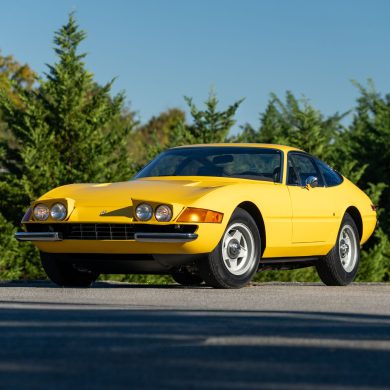
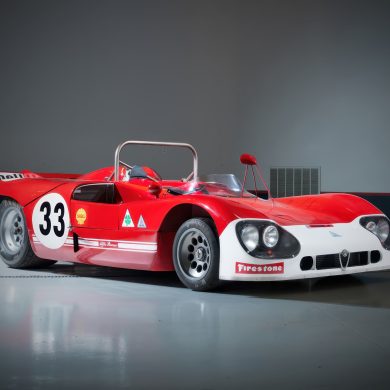
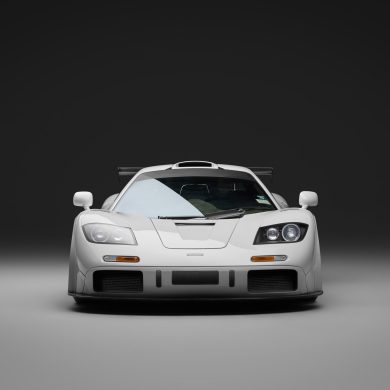
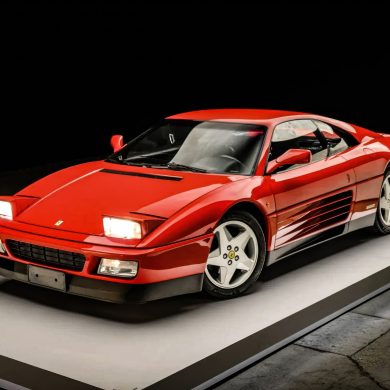
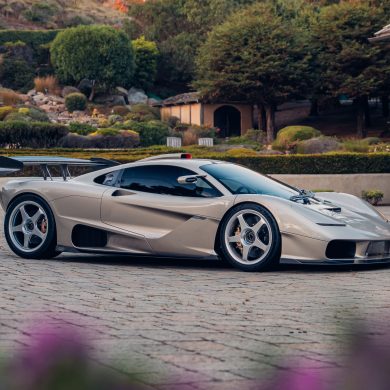
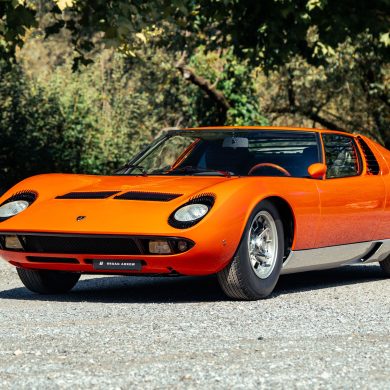


Amazing car and story – has to be a $7-10 million car!
My boss bought this car and it showed up yesterday. what a treat to get to see it in person and give it a full inspection! The history and documentation of this car is un-rivaled!
Money, money, money…in so many ways.
My guess on what is will bring tomorrow – $8 million.
I know someone who will be bidding and he expects it to reach those ranges discussed. Well worth it.
anyone know the selling price ????
The Bugelfalte was bid to 4.3 million euros and did not sell on the auction block. However, it did sell for a “confidential sum” within 24 hours.
Bloomberg is reporting that the selling price was 4.5 million euros.
Strange , I heard it didn’t sell and that’s why the price was not included in the sales total ? anyhow thanks for the reply and love the site
Thanks for the note!
It was not included because they did not release the sales price, only the “confidential sum.”
I spoke to my friend and he says ” confidential sum ” is auction speak for not sold , It’s like those ” phone bidders ” that always seem appear when biding slows down then quickly disappear when someone in the room bids higher , anyhow a great sale with great cars , and when is an Auction company going to tap into China ?